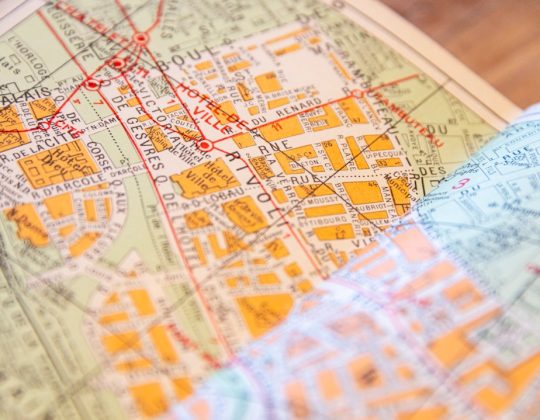In the realm of visual communication, a logo is much more than an artistic symbol—it’s a strategic cornerstone for brand recognition and identity. To function effectively across platforms and mediums, a logo must reflect visual harmony and spatial logic. This is where logo alignment systems—grids, baselines, and balance—come in. These tools and principles ensure that logos are proportionate, aesthetically pleasing, and professionally executed at every scale of usage.
TLDR (Too long, didn’t read):
Logo alignment systems involve strategic use of grids, baselines, and visual balance to create logos that appear clear and well-structured in any context. These design frameworks ensure that logos maintain proportion, symmetry, and alignment regardless of the medium or application. Proper alignment isn’t just about aesthetics—it’s a subtle but critical factor in building trust and recognition in a brand. Whether you’re designing from scratch or refining an existing mark, applying these systems enhances usability and visual integrity.
The Importance of Alignment in Logo Design
Good design isn’t accidental. Professional logo designers rely on geometric logic and visual alignment to create harmony and efficiency in their work. Logos that adhere to alignment principles:
- Are easier to reproduce across various formats and scales
- Convey greater organizational control and brand consistency
- Ensure perceptual balance for all viewers, regardless of medium
Sloppy alignment leads to logos that feel amateurish, even if the concept is strong. In contrast, precise alignment systems help logos stand the test of time while remaining versatile and professional.
Grid Systems: The Foundation of Logo Alignment
Grid systems serve as the structural backbone of logo creation. These invisible frameworks guide the placement of every curve, line, and negative space. They help designers maintain proportionality, symmetry, and spacing constants that make a logo feel cohesive.
Common types of grid systems used in logo design include:
- Modular grids: A system based on consistent divisions, useful for logos with typographic or abstract symbol elements.
- Golden ratio and Fibonacci grids: Based on natural proportions observed in art and nature, these are preferred for logos aiming for a sophisticated or timeless aesthetic.
- Angle-based grids: Found in dynamic or tech-oriented logo designs, where diagonal symmetry is key.
Using a grid system does not restrict creativity—it enhances it. Designers who understand how to use grids flexibly are able to manipulate space in inventive ways, while preserving clarity and cohesion.

Baselines and Optical Alignment
A baseline refers to the invisible line upon which type or graphic elements rest. In logo design, especially in wordmarks or type-influenced logos, baselines are crucial for maintaining a horizontal alignment that appears visually balanced.
However, relying solely on mathematical alignment can sometimes result in a logo that looks misaligned. This is where optical alignment comes into play. Human perception doesn’t always read geometric precision as harmonious. For example:
- Rounded letters like “O” or “C” often need to slightly ‘hang’ below or above the baseline to appear visually aligned with flat-bottomed characters like “T”.
- Diagonal shapes may require subtle repositioning to match the perceived center with other elements.
Successfully combining mathematical baselines with minor visual adjustments delivers the most polished and readable results. The end goal is always what looks right, not just what measures right.
Balance: Visual Weight and Symmetry
Achieving balance in logo design is about ensuring that the composition doesn’t feel lopsided or visually heavy in one area. Balance can be symmetrical—where halves mirror each other—or asymmetrical, where varying visual elements still form a stable composition.
To assess or improve logo balance:
- Identify the visual center. This is the anchor point around which elements should balance.
- Evaluate spatial distribution. Negative space should be treated as actively as filled areas.
- Consider weight of colors, lines, and shapes. Heavier visual elements can be countered by lighter components placed strategically.
An unbalanced logo can result in viewer discomfort or confusion. In contrast, balanced logos feel more trustworthy and enduring because our brains are naturally drawn to order and stability.

Applying Alignment Systems Across Logo Types
Different categories of logos require different alignment approaches. Here’s a breakdown of how grids, baselines, and balance are applied across logo types:
Logotypes (Wordmarks)
- Use of baseline grids ensures typefaces are aligned and readable at various sizes.
- Optical tweaks compensate for uneven character widths or descenders.
Monograms and Lettermarks
- Geometric grids help align letterforms proportionally.
- Balance is critical since these logos often rely on minimal forms to convey identity.
Icon or Symbol Logos
- Angle- or circle-based grids maintain spatial cohesion in abstract designs.
- Scaling tests ensure the alignment retains clarity at small sizes.
Combination Marks (Text + Icon)
- Grids organize spacing between the icon and text.
- Shared baselines give the entire mark a single point of reference for balance.
Common Alignment Pitfalls to Avoid
Even experienced designers can fall into alignment traps. Here are typical mistakes to watch for:
- Ignoring optical corrections: Strict reliance on vectors can lead to logos that don’t ‘look right’ despite being technically aligned.
- Poor grid application: Misusing or misunderstanding grid systems can lead to clunky or overly rigid designs.
- Neglecting space relationships: Uneven kerning or unbalanced negative space undermines the professional feel of a logo.
Testing your logo in real-world contexts—such as mockups, business cards, signs, or mobile apps—can highlight these flaws and allow for timely refinement.
Logo Alignment in Responsive Environments
Modern branding isn’t static. Logos must function across digital and physical platforms, from billboards to app icons. Alignment systems facilitate this adaptability. A logo designed with clear grids, consistent baselines, and strong balance is easier to scale, animate, or reformat without losing integrity.
Some strategies used in adaptive environments include:
- Dynamic grids: Flexible enough to accommodate screen resolutions while holding core structure.
- Modular scaling: Core logo elements scale proportionally, preserving balance and alignment at all sizes.

Conclusion: The Invisible Precision of Successful Logos
Behind every iconic logo is a system of invisible logic—grids that structure, baselines that guide, and visual balance that anchors. These principles elevate design from subjective art to objective communication. Alignment isn’t about following strict rules for the sake of conformity—it’s about understanding how humans perceive shapes, weight, and space, and using that knowledge to craft lasting impressions.
Whether you’re a seasoned designer or an emerging brand strategist, revisiting these fundamentals can sharpen your eye, refine your output, and give your work the visual authority that strong brands demand.








